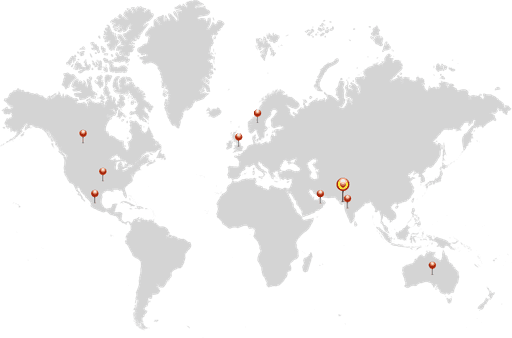Artificial intelligence (AI) is a rapidly growing field that has the potential to revolutionize many industries and change the way we live our lives. At its core, AI is a set of technologies and techniques that enable computers to perform tasks that typically require human intelligence, such as recognizing speech, understanding natural language, recognizing images, and more. But what are the key components of AI that make this possible? In this article, we'll take a closer look at the critical components of Artificial intelligence and how they work together to create intelligent systems.
TL; DR
Machine learning: This is the ability of a computer system to learn from data and improve its performance over time without being explicitly programmed.
Natural language processing (NLP): A computer system's ability to understand and interpret human language.
Robotics: This is the ability of a computer system to control and interact with physical devices.
Computer vision: This is the ability of a computer system to interpret and understand visual information from the world, such as images and videos.
Planning and decision-making: This is the ability of a computer system to make decisions based on incomplete or uncertain information.
Knowledge representation and reasoning: This is the ability of a computer system to represent and reason knowledge and information.
Robotics and actuators: This refers to the mechanical parts of the AI system that allow it to move and act in the real world.
Sensors: This is the ability of a computer system to perceive and gather information from the world through different types of sensors, including cameras, microphones, and other types of sensors.
1. Machine Learning
Machine learning is a critical component of Artificial intelligence because it enables computers to learn from data and improve their performance over time. Machine learning is the ability of a computer system to learn from data and improve its performance over time without being explicitly programmed. There are several types of machine learning, including supervised, unsupervised, and reinforcement learning. In supervised learning, a computer is given a set of labelled examples and learns to make predictions based on those examples. In unsupervised learning, a computer is given a set of unlabeled examples and must find patterns and structures in the data independently. Reinforcement learning is machine learning in which a computer learns by receiving rewards or penalties for specific actions.
2. Natural Language Processing (NLP)
Natural Language Processing (NLP) is the ability of a computer system to understand and interpret human language. NLP is a broad field that encompasses a variety of tasks, including text classification, language translation, and sentiment analysis. One of the most challenging tasks in NLP is understanding the meaning of natural language text. To do this, computer systems use syntactic, semantic, and pragmatic analysis techniques to extract meaning from text. NLP is a crucial component of Artificial intelligence because it enables computers to understand and interpret human language, which is essential for language translation, text classification, and sentiment analysis.
3. Robotics
Robotics is the ability of a computer system to control and interact with physical devices. Robotics is a complex field that encompasses a variety of tasks, including perception, planning, and control. Perception is the ability of a robot to perceive its environment through sensors such as cameras and microphones. Planning is the ability of a robot to plan its actions based on its perception of the environment. Control is the ability of a robot to execute its plans in the real world. Robotics is a critical component of Artificial intelligence because it enables computers to control and interact with the physical world, which is essential for manufacturing, transportation, and search and rescue tasks.
4. Computer Vision
Computer vision is a field of artificial intelligence that deals with the ability of computers to interpret and understand visual information from the world, such as images and videos. Computer vision aims to enable computers to recognize objects, scenes, and patterns in pictures and videos and make decisions based on that information. Computer vision is used in many applications, such as autonomous vehicles, medical imaging, security, and robotics. Various techniques are used to perform computer vision tasks, including deep learning, convolutional neural networks, and feature extraction. The field of computer vision is constantly evolving, with new techniques and technologies being developed to enhance the ability of computers to interpret and understand visual information.
5. Planning and decision making
Planning and decision-making are vital components of Artificial Intelligence (AI) that enable computer systems to make informed decisions based on incomplete or uncertain information. Planning refers to the process of creating a sequence of actions that will achieve a specific goal. Decision-making, on the other hand, is the process of choosing an action based on information and objectives. Both methods are critical for solving complex problems that require decision-making based on multiple variables and constraints. Artificial intelligence algorithms, such as decision trees, Bayesian networks, and Markov decision processes, are used for decision-making. These processes allow computer systems to act autonomously and make efficient and accurate decisions. Planning and decision-making are used in various applications, such as autonomous vehicles, recommendation systems, and medical diagnosis.
6. Knowledge representation and reasoning
Knowledge representation and reasoning are essential components of Artificial Intelligence (AI) that deal with the representation and manipulation of knowledge by computer systems. Knowledge representation refers to representing information in a format that computer systems can process. This includes using formal languages and structures, such as ontologies and logic, to represent knowledge.
The reasoning is critical for making decisions, solving problems, and understanding the relationships between different pieces of information. On the other hand, the reason is using the information in knowledge representations to make inferences and deductions. This involves using rules and logical reasoning to draw conclusions based on available data.
Together, knowledge representation and reasoning form the basis for many Artificial intelligence applications, such as expert systems, natural language processing, and the semantic web, among others. By representing and reasoning with knowledge, computer systems can make informed decisions, understand complex relationships, and provide explanations for their actions. The development of knowledge representation and reasoning is an ongoing area of research in AI, with new techniques and technologies being developed all the time to enhance the ability of computer systems to represent and reason with knowledge.
7. Robotics and actuators
Robotics and actuators are two closely related fields in Artificial Intelligence (AI) that deal with the design and control of robots. Robotics involves the study of robots, their design, construction, and operation, and the development of algorithms and systems for their control. Robots are typically designed to perform tasks that are either too dangerous or too repetitive for humans to perform.
Actuators, on the other hand, are devices that convert electrical or hydraulic energy into motion. They are an essential component of robots and allow robots to move and interact with the world. Actuators come in various forms, including motors, solenoids, and piezoelectric actuators.
Together, robotics and actuators form the basis for many Artificial intelligence applications, such as industrial automation, medical robots, and autonomous vehicles. By using robots and actuators, computer systems can interact with the physical world and perform tasks that would otherwise be impossible. The development of robotics and actuators is an ongoing area of research, with new techniques and technologies being developed all the time to enhance the performance and capabilities of robots.
8. Sensors
Sensors are devices that measure physical quantities, such as temperature, light, and motion and convert them into electrical signals that computers can process. Sensors play a crucial role in Artificial Intelligence (AI) by allowing computer systems to gather information from the environment and make informed decisions based on that information.
There are various types of sensors, including temperature sensors, light sensors, motion sensors, and proximity sensors, among others. Sensors are used in many Artificial intelligence applications, such as autonomous vehicles, medical devices, and smart homes.
The development of sensors is an ongoing area of research, with new sensors being developed all the time to enhance the capabilities of Artificial intelligence systems. Using sensors, computer systems can gather information from the environment, such as the position and orientation of objects, the brightness and colour of light, and the movement of people and things. This information can then be used to make decisions, control systems, and interact with the physical world.
Summary
These components form the building blocks of Artificial intelligence. They are used to develop a wide range of Artificial intelligence applications, such as self-driving cars, medical devices, and smart homes.

We are a family of Promactians
We are an excellence-driven company passionate about technology where people love what they do.
Get opportunities to co-create, connect and celebrate!
Vadodara
Headquarter
B-301, Monalisa Business Center, Manjalpur, Vadodara, Gujarat, India - 390011
Ahmedabad
West Gate, B-1802, Besides YMCA Club Road, SG Highway, Ahmedabad, Gujarat, India - 380015
Pune
46 Downtown, 805+806, Pashan-Sus Link Road, Near Audi Showroom, Baner, Pune, Maharashtra, India - 411045.
USA
4056, 1207 Delaware Ave, Wilmington, DE, United States America, US, 19806

Copyright ⓒ Promact Infotech Pvt. Ltd. All Rights Reserved

We are a family of Promactians
We are an excellence-driven company passionate about technology where people love what they do.
Get opportunities to co-create, connect and celebrate!
Vadodara
Headquarter
B-301, Monalisa Business Center, Manjalpur, Vadodara, Gujarat, India - 390011
Ahmedabad
West Gate, B-1802, Besides YMCA Club Road, SG Highway, Ahmedabad, Gujarat, India - 380015
Pune
46 Downtown, 805+806, Pashan-Sus Link Road, Near Audi Showroom, Baner, Pune, Maharashtra, India - 411045.
USA
4056, 1207 Delaware Ave, Wilmington, DE, United States America, US, 19806

Copyright ⓒ Promact Infotech Pvt. Ltd. All Rights Reserved
